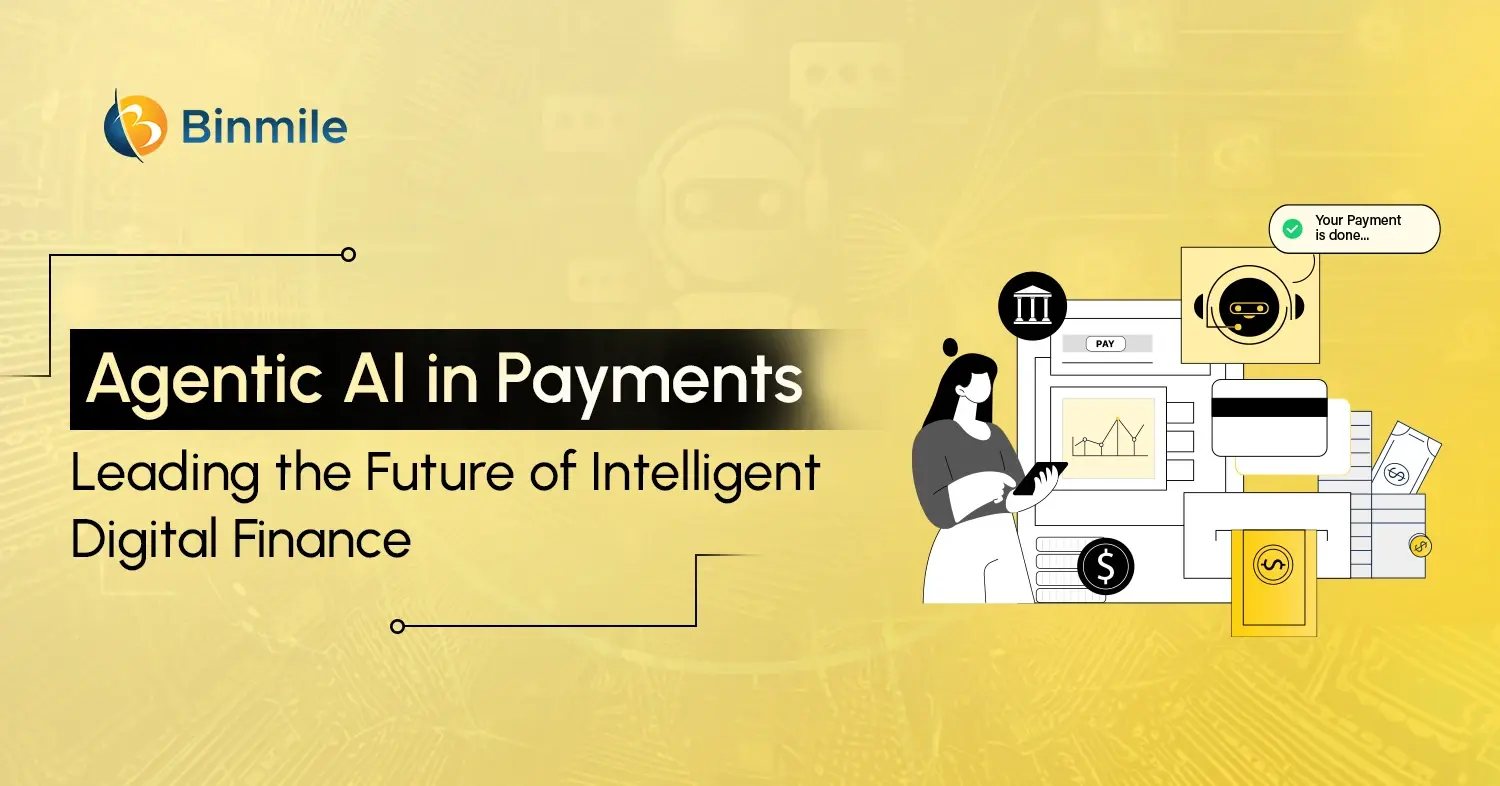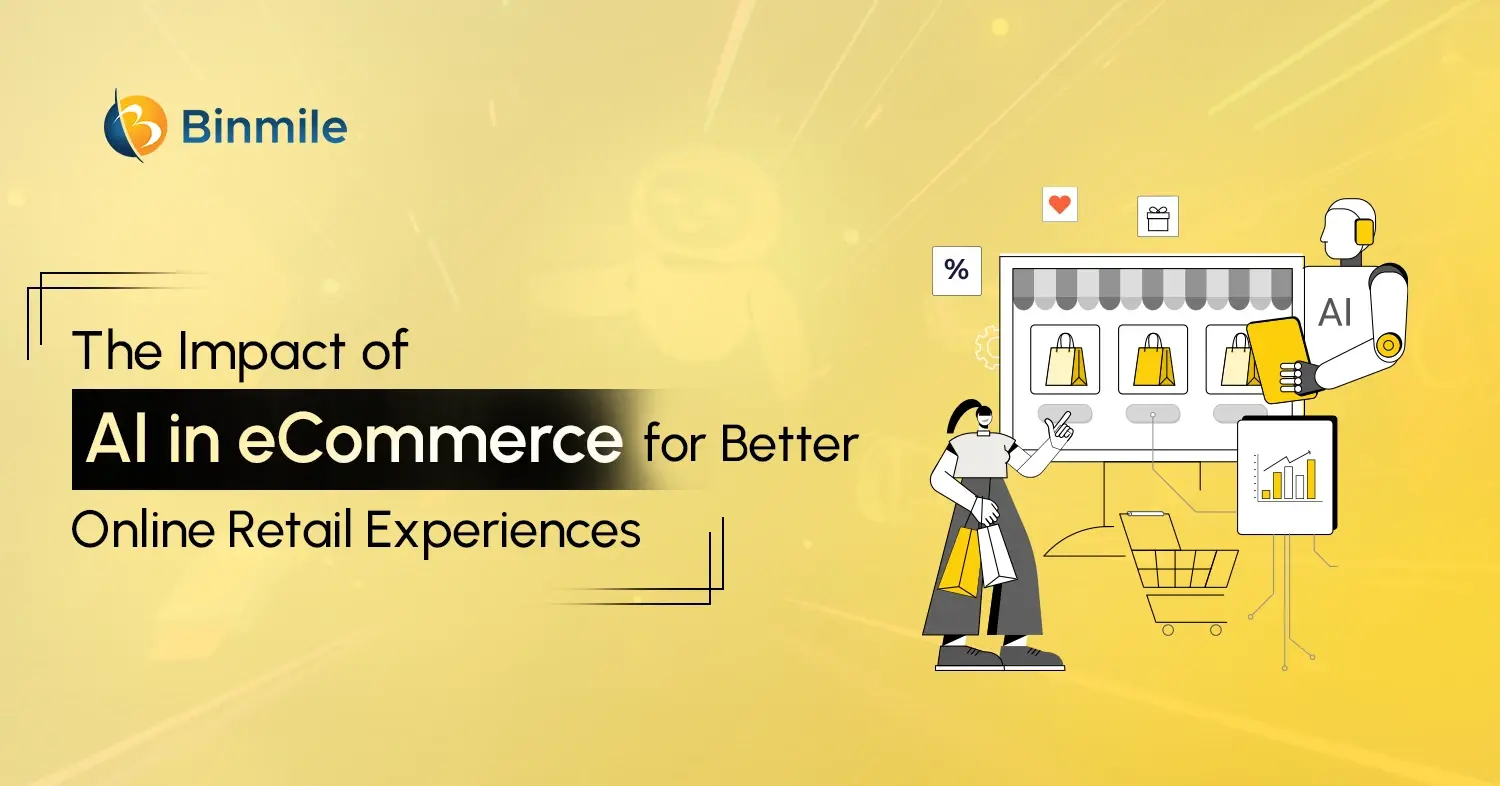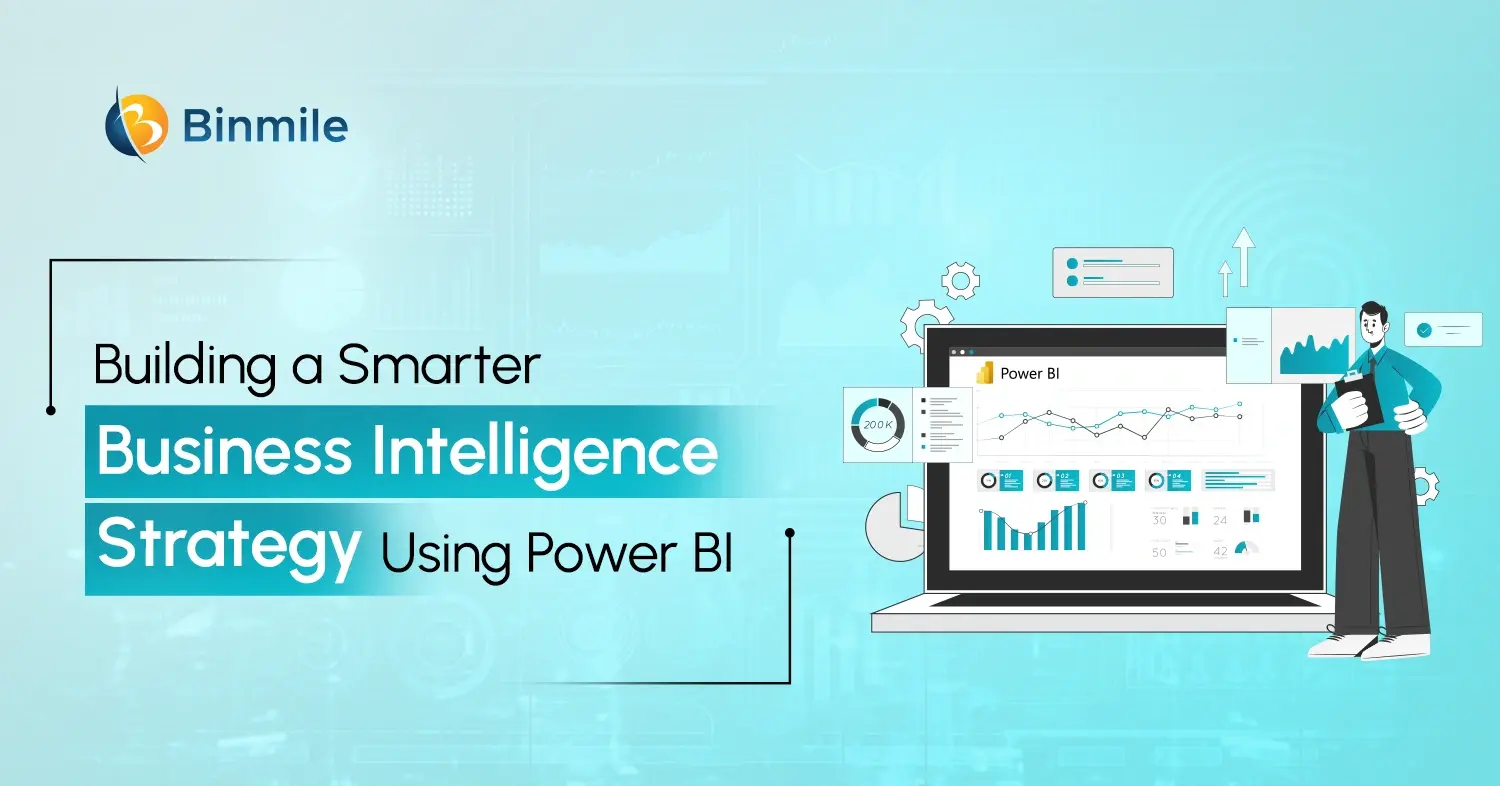The global payment ecosystem is entering a new era, one where Artificial Intelligence does not just automate processes but also acts autonomously to make real-time financial decisions. This evolution is driven by Agentic AI in Payments, a transformative approach that empowers intelligent systems to analyse data, initiate actions, and complete payment tasks without human intervention. According to Bank of America analysts, global Agentic AI spending is expected to reach $155 billion by 2030, signalling its rapid adoption across industries. As businesses and consumers alike move toward real-time, adaptive, and secure financial experiences, Agentic AI is emerging as the cornerstone of the next generation of digital payments.
What Is Agentic AI in Payments?
An agentic AI system is an artificial intelligence system that takes independent steps toward achieving a predetermined goal.
With respect to payments, agentic AI payments involve including self-driven autonomous agents in a payment workflow, where such an agent supervises, makes determinations, performs actions, and even initiates payments in a payment flow. In payments, for example, agentic AI performs autonomous actions such as determining the optimal payment channel to use, completing the payment, performing reconciliation, and handling fraud management.
What are the Benefits of Agentic AI in Payments?
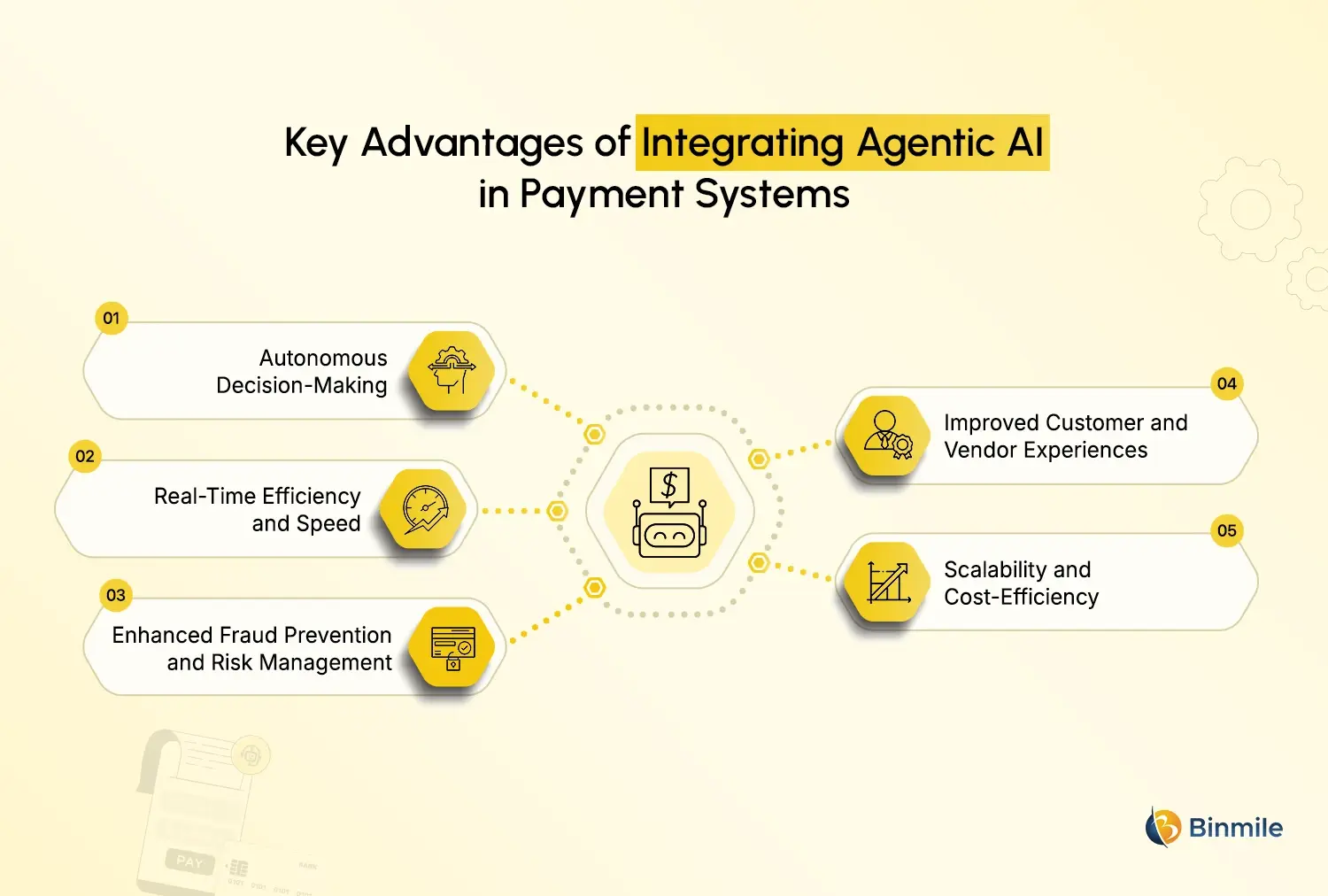
Introducing Agentic AI in payments brings a wide range of advantages for both businesses and consumers. Here are some of them
-
Autonomous Decision-Making
Agentic AI models make it possible for payment systems to evaluate data and contextually make their own decisions. In a matter of seconds, they assess credit risk, determine fraudulent behaviour, and optimise routing of funds. Not only does the real-time processing of information improve decision-making accuracy, but the elimination of manual checks results in quicker and cheaper payment processing while operational costs drop.
-
Real-Time Efficiency and Speed
Agentic AI solutions make it possible for the reconciliation of accounts, vendor settlements, and even cross-border transactions to occur instantly. Because the system can independently learn transactional patterns, it ensures payment is completed without unnecessary slippages of time. In global agentic AI payments, this is important for operational efficiency, but more so for client satisfaction.
-
Enhanced Fraud Prevention and Risk Management
Agentic AI frameworks, unlike traditional machine learning for fraud detection in payments, which is based on historical data, continuously evolve. By learning and adapting to new fraudulent strategies, they execute preventative measures in real time. This positively matters in securing AI-driven payment systems and protecting their clients from unplanned exposure to cyber threats.
-
Improved Customer and Vendor Experiences
The fusion of autonomy and data is transforming customer and vendor experiences. AI entails billing automation, payment suggestions based on spending patterns, and payment management for vendors. For businesses, this means enhanced customer loyalty and retention, along with personalised journeys based on real-time insights for businesses.
-
Scalability and Cost-Efficiency
Agentic systems enhance autonomy with minimal human input. It consistently lowers operational costs and facilitates adaptability as transaction volumes increase. These systems provide businesses with self-scaling infrastructures that control costs and headcount relative to demand.
Transform your payment ecosystem with intelligent Agentic AI solutions designed to boost efficiency and security.

Challenges of Implementing Agentic AI in Payments
As transformative as it is, integrating agentic AI tools in payments also brings challenges that demand careful consideration. The shift toward autonomy introduces new responsibilities in governance, regulation, and security.
-
Governance and Oversight
Autonomous systems ask new questions regarding accountability. Who will confirm if an agentic payment decision concords with a company policy or with a customer’s will? For systems to be reliable and inspire confidence, audit trails and transparency, and human-in-the-loop mechanisms will be essential.
-
Data Quality and Integration
Data quality and integration at financial institutions are also issues. Agentic AI systems will also need real-time clean data streams from payment gateways, banking networks and ERP systems. Legacy financial institutions will likely need to make significant architectural changes to integrate these data points in a cohesive fashion.
-
Regulatory and Compliance Risks
Regulatory compliance concerning financial transactions and the use of autonomous agents changes compliance and liability. Agentic AI models will need to automate compliance regarding the use of PCI DSS, AML, and KYC to ensure automation will not compromise adherence to regulations. AI systems will need clear agentic AI frameworks along with defined roles to ensure compliance and automate liability.
-
Security and Trust
When working on behalf of users or organisations, AI agents need to work with sensitive information and confidential user credentials accompanied by appropriate security measures like multi-factor authentication, tokenisation, and encryption. Trust must be built: users need to feel confident that agentic AI systems will secure their assets as well as human operators.
-
Change Management and Adoption
New technology meets complexity and employee hesitation. Employees need to be trained to work side by side with autonomous systems, and supervisors need to understand the system’s logic and benefits. Trust and confident adoption help to ensure smooth implementation.
-
Maturity and Hype
Emerging technology comes with a crowded marketplace. Many of the products branded as “agentic AI” are actually sophisticated automation systems that lack true autonomy. Organisations must distinguish viable options with desired KPIs and sustainable value to minimise the exposure to superficial market attention.
How to Make Agentic AI in Payments Work?

For fintech companies, banks, and service providers offering agentic AI development services for payments, success with agentic AI tools depends on a strategic, structured approach. The goal is not just deploying technology, it’s ensuring that autonomy delivers measurable business impact.
- Map the Payment Workflows: Identify high-volume, repetitive, decision-rich payment flows that can benefit from autonomy.
- Establish Data & System Integrations: Ensure real-time access to transaction data, payment gateways, and ERP systems.
- Choose the Right Agentic Model: Some workflows need a single-agent model; others require multi-agent orchestration.
- Define Clear Guardrails: Even autonomous systems need an escalation and audit point; define when humans intervene.
- Pilot Small, Scale Smartly: Begin with non-critical flows, measure performance, then scale.
- Monitor, Learn & Optimise: The agentic system should adapt and improve based on feedback.
- Ensure Compliance & Security: Implement strong identity verification, logging, and regulatory safeguards.
- Promote Change Adoption: Communicate value to stakeholders and build trust in the system’s autonomy.
Agentic AI Use Cases in the Payments Industry
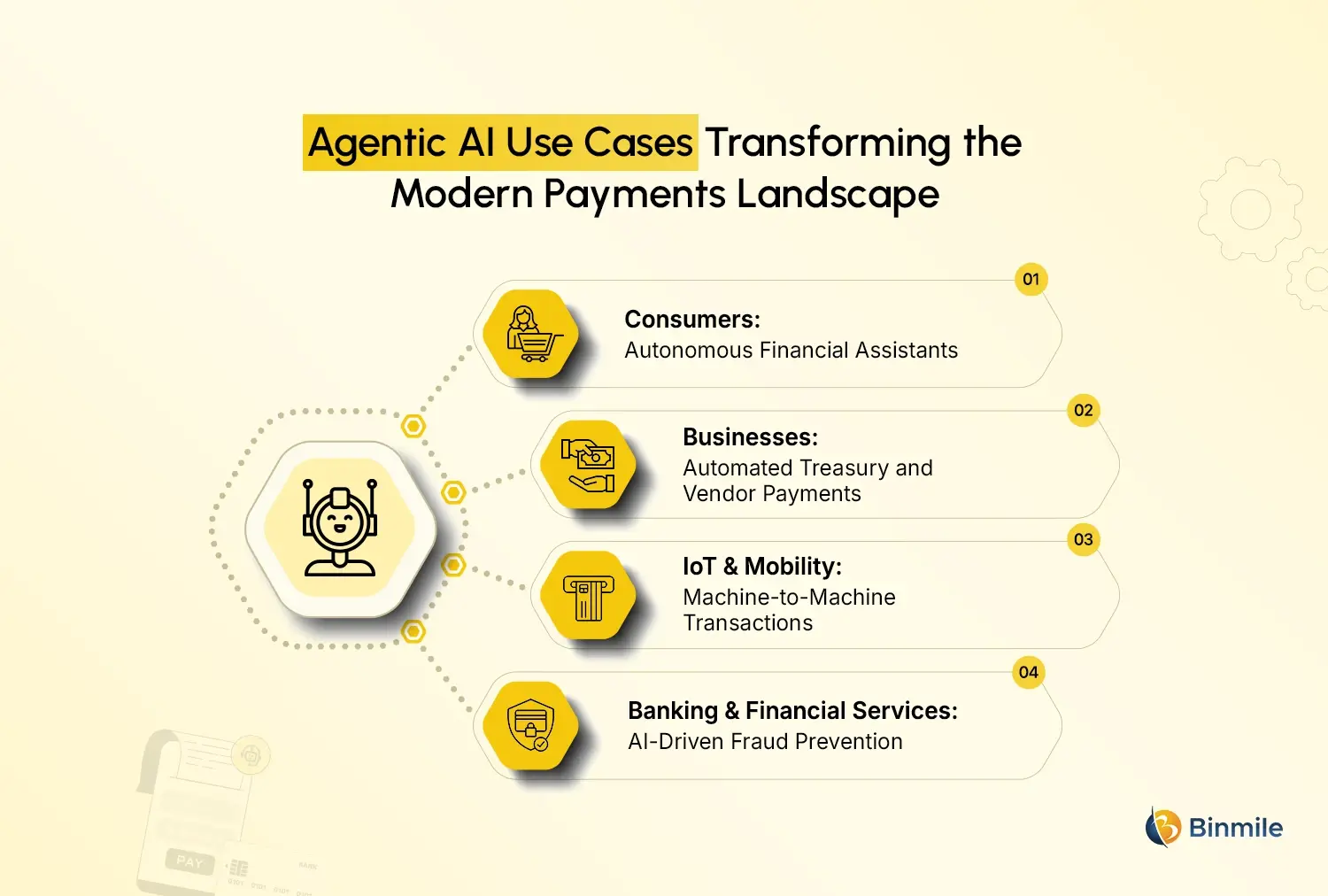
To truly understand Agentic AI, it is important to look beyond definitions and explore agentic AI use cases to know how it functions in real-world settings. Let us understand agentic AI with the real-time use cases along with agentic AI examples.
1. Consumers
Agentic AI technologies are transforming the way people respond to everyday financial decisions. These technologies function as personal finance managers, not only handling real-time payments but also making real-time decisions as spending patterns and financial goals change.
They are capable of:
- Automatically paying a recurring bill or a one-time e-commerce purchase.
- Active allocation of surplus cash towards savings, investments, or debt repayment.
- Identifying patterns of overspending and offering tailored suggestions to change spending habits.
- Maximising benefits from cashbacks, rewards, and loyalty programs.
Example: A consumer’s AI agent identifies an upcoming utility bill and delays the payment until funds from an incoming salary are available, maintaining financial flow without user intervention.
2. Businesses
Agentic AI in payments is transforming B2B financial workflows for enterprises. Autonomous systems perform invoice management, vendor payment, and treasury operations to reduce human effort while ensuring accuracy, compliance, and speed.
They are capable of:
- Automatically validating and processing invoices after delivery confirmation.
- Real-time transaction reconciliation across accounts.
- Execution of rule-based payments tied to contracts, milestones, or budgets.
- Cash flow forecasting and fund allocation recommendations.
Example: A manufacturing firm deploys an agentic AI system to monitor supplier invoices and initiate payments automatically when delivery and quality checks are completed.
3. IoT & Mobility
Agentic AI enables a segment of the connected economy where devices can process payments by themselves. AI models facilitate machine-to-machine transactions with no human intervention. From vehicles to home appliances, these payment systems use autonomous AI agents.
They are capable of:
- Make it possible for Electric Vehicles to find and pay for charging stations automatically.
- Equip smart fridges to consume groceries and reorder automatically.
- Enable drones or delivery robots to pay for route access and negotiate payment.
- Real-time microtransactions among IoT devices.
Example: A fleet of delivery drones pays dynamically for airspace usage using embedded agentic AI payment models that calculate cost per route.
4. Banking & Financial Services
Agentic AI solutions increase process automation in the financial services sector to the next level. Fully embedded within digital payment systems, these autonomous agents analyse, respond, and eliminate possible threats and ensure compliance in real-time.
They are capable of:
- Monitor and analyse transactions and assess fraud risk in real-time.
- Autonomously trigger and stop suspicious transactions.
- Use behavioural analytics to create dynamic scoring and classification.
- Assess and improve contextual information in real-time to make and adjust credit and lending decisions.
Example: A bank’s AI-driven payment agent flags an unusual overseas transaction and autonomously verifies the user’s location before approving it, preventing fraud without disrupting service.
Discover how Agentic AI can redefine your payment operations and drive smarter financial decisions.

How Can Binmile Accelerate Your Agentic AI Transformation in Payments?
If your company offers digital payment solutions in fintech or AI-driven fraud prevention in payments, adopting agentic AI can be a true game-changer. By shifting from basic automation to autonomous, goal-driven agentic workflows, payment businesses can achieve faster settlements, stronger fraud protection, and improved customer experiences.
As we move toward 2026, Agentic AI in Payments is not just a futuristic concept; it’s the next logical step in payment evolution. Businesses like Binmile are already helping fintech clients build and integrate agentic-AI-enabled payment orchestration layers that bring intelligence, scalability, and compliance together. If you are exploring how to implement agentic AI in your payment ecosystem, define pilot use-cases, or scale securely, our team can help you craft a strategy built for the next era of intelligent payments.
Frequently Asked Questions
The trend is toward multi-agent systems, standardised protocols (like AP2, MCP), real-time orchestration, deeper integration into payments, commerce, and enterprise workflows, and shifting from “assist” to “act”.
By moving payments from reactive human-driven flows to proactive, agent-driven flows. This means faster payments, intelligent routing, less human friction, new business models, and improved user experience.
Choose a partner with domain expertise in payments, AI/ML model development, orchestration platforms, compliance knowledge, and successful fintech delivery. They should have a clear understanding of agentic AI models, frameworks, and integrations.
Traditional AI models often predict or classify based on data. Agentic AI tools act: they plan, monitor, decide, and execute tasks over time, adapt dynamically, and engage in multi-step workflows. They require richer architecture, multi-agent coordination, and stronger control/governance.
More than generative AI in banking, agentic AI solutions can automate payment flows, manage credit or loan repayments, optimise treasury operations, coordinate cross-department workflows, personalise customer financial services, and support new embedded finance models.
